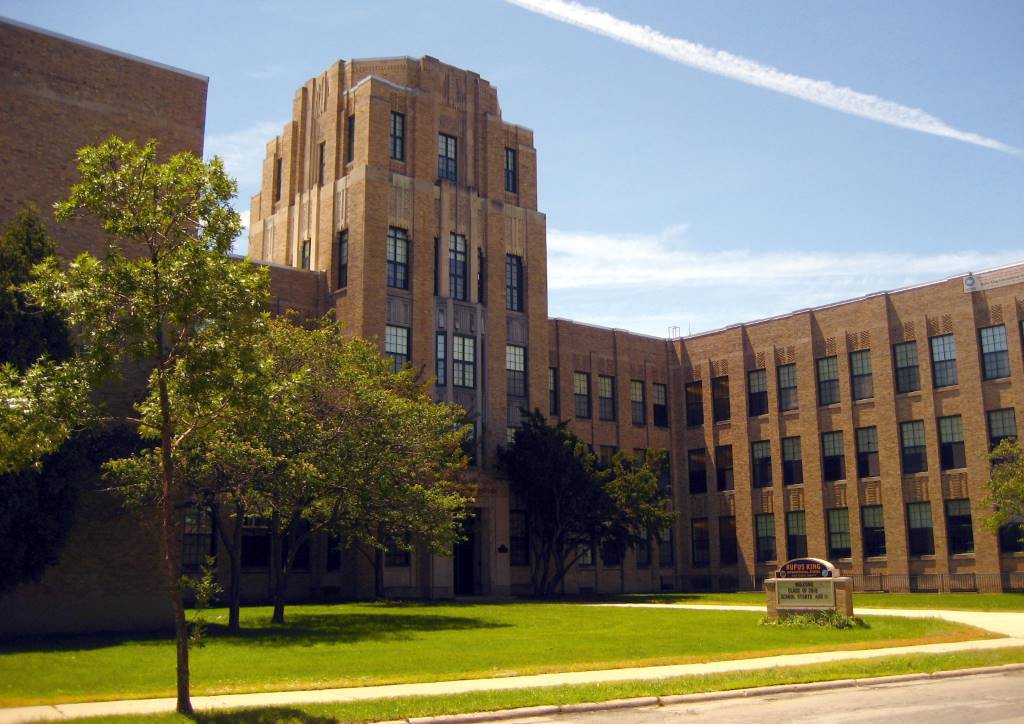MPS Loses Most Under Assembly GOP School-Aid Plan
Gov. Walker's school-aid plan provides $14.8 million more than Assembly plan for MPS.
A comparison of how each legislator’s school districts would fare under Gov. Scott Walker’s plan to increase state K-12 schools aids by $649 million and the different school-aid boost of Assembly Republicans is a fascinating example of “legislating by printout.”
There are 132 legislators, but you can count on one hand the number who really understand how byzantine state school-aid formulas work. Or maybe you need only three fingers.
Once legislators digest those numbers, and share them with local officials back home, Nygren and Assembly Speaker Robin Vos hope a consensus emerges for their plan.
Two things to understand about Nygren’s numbers:
*First, all Republicans plan to dramatically boost state K-12 aids over the next two school years – a period that includes Walker’s 2018 campaign for a third term. They are fighting over how much more aid to distribute, and how it should be parceled out.
*Second, Assembly Republicans would allow 208 low-spending school districts to exceed property tax levy limits they have chafed under since 1993. Those districts could levy an additional $92.2 million in property taxes, and Nygren’s numbers assume that they levy almost all of that.
That’s important because Senate Majority Leader Scott Fitzgerald said Senate Republicans want nothing to do with a plan that picks “winners and losers” among the state’s 424 school districts. And, Walker has promised to veto any state budget that raises the net property tax bills on a median-valued home.
What do Nygren’s number show?
Not surprisingly, the two cities that elect Democrats – Milwaukee and Madison – have the most at stake in how new school aids would be distributed under both plans.
Milwaukee Public Schools (MPS) got almost $700 million more in state aid in 2015-16, according to the non-partisan Legislative Fiscal Bureau (LFB). Nygren said MPS would get $47.7 million more under Walker’s plan, but $32.8 million – or $14.8 million less – under the Assembly Republicans’ plan.
Madison’s school district would get an additional $16.2 million under Walker’s plan, and $12.4 million – or $4.1 million less – under the Assembly GOP plan. In 2015-16, Madison got $133.5 million in state aid, LFB reported.
Other school districts that would lose more than $1 million, when the Assembly GOP plan is compared to Walker’s plan, are: Racine, -$3.7 million; Kenosha, -$2.7 million; Eau Claire, -$1.4 million, and Sheboygan and Waukesha, -$1.2 million each.
School districts in other cities, and how their additional state aid would change under the Assembly GOP plan, compared to Walker’s plan, are: Oshkosh, +$4.1 million; Fond du Lac, +$3 million; Stevens Point, +$2.5 million; Manitowoc, +$2.4 million; Janesville, +$2.3 million; Marshfield, +$1.9 million; Green Bay,+$1.7 million; Superior, +$1.4 million; Beloit, +$40,663, and Appleton, -$250,752.
Oshkosh, Fond du Lac, Stevens Point and Janesville would be the biggest winners under the Assembly GOP plan. But other school districts whose aid would go up by more than $1 million, compared to Walker’s proposal, are:
West Bend and Howard-Suamico, +$2.9 million each; Mukwonago, +$2.5 million; Merrill, +$2 million; Slinger, +$1.8 million; Kimberly, +$1.7 million; Ashwaubenon and Medford, +$1.3 million each; Watertown, Baraboo and Sauk Prairie, +$1.2 million each; New Richmond and Milton, +$1.2 million each; Plymouth, Grantsburg and Sparta, +$1.1 million each, and River Falls and Onalaska, +$1 million.
In an interview, Nygren said 208 school districts with 60% of all K-12 students statewide have been hurt by levy-limit controls enacted in 1993.
“We’ve always continued this inequity,” Nygren said, so having more money for K-12 school aids is the right time to fix that disparity.
He gave this example: One school district can adopt a property tax levy 23% higher than the levy of neighboring district Yet, Nygren said, “They have to compete for the same teachers.”
One Republican senator said Nygren’s numbers for school districts in his district were interesting, but came too late in the budget process to make a difference. Walker, after all, has been touring the state touting his $649-million increase for months, the senator added.
Steven Walters is a senior producer for the nonprofit public affairs channel WisconsinEye. Contact him at stevenscwalters@gmail.com
The State of Politics
-
A Wisconsin Political Trivia Quiz
 Dec 15th, 2025 by Steven Walters
Dec 15th, 2025 by Steven Walters
-
The Fight Over Wisconsin’s House Districts
 Dec 8th, 2025 by Steven Walters
Dec 8th, 2025 by Steven Walters
-
The Battle Over On-Line Betting
 Nov 24th, 2025 by Steven Walters
Nov 24th, 2025 by Steven Walters






















